Journal of Vaccines and Immunology
Supercritical Carbon Dioxide Extract of Seabuckthorn Leaves Enhances Rabies Virus Neutralizing Antibody Titers and CTL Response in Swiss Albino Mice
B Jayashankar1, D Singh1, KP Mishra1*, SN Madhusudana2, Ashwin YB2, SB Singh1 and L Ganju1
2National Institute of Mental Health and Diseases, Bengaluru, India
Cite this as
Jayashankar B, Singh D, Mishra KP, Madhusudana SN, Ashwin YB, et al. (2016) Supercritical Carbon Dioxide Extract of Seabuckthorn Leaves Enhances Rabies Virus Neutralizing Antibody Titers and CTL Response in Swiss Albino Mice. J Vaccines Immun 2(1): 004-009. DOI: 10.17352/jvi.000013Introduction: Rabies is a viral disease that causes nearly thousands of death globally per year. Vaccination against rabies generates virus neutralizing antibodies and is the most successful and cost effective method of preventing the disease. In the present study, we have evaluated the adjuvant property of supercritical carbon dioxide extract (SCE) 300ET of Seabuckthorn (SBT) leaves against inactivated rabies virus antigen in Swiss albino mice.
Methods: Mice were grouped as PBS control; inactivated rabies antigen (Rb) control; 300ET+Rb and Algel+Rb. All the mice were primed on day 1 followed by single booster at day 14. Sera were collected at different time points for RVNA analysis. Additionally, the effect of SCE on CD8+Granzyme B+ Cytotoxic T Lymphocyte (CTL) response, surface markers and cytokine levels were measured.
Result: The results showed enhanced rabies virus neutralizing antibody (RVNA) titres using 300ET as compared to control and Algel groups as measured by Rapid Fluorescent Focus Inhibition Test (RFFIT). Moreover, the extract 300ET and Algel showed increased CD138+ (plasma cells) and CD11c+ (dendritic cells) cell population as compared to the inactivated rabies antigen immunized mice. The extract 300ET also stimulated cellular immunity by showing heightened CTL response and proinflammatory cytokines level such as TNF-α and IL-1β.
Conclusion: Hence, our results suggested that SCE300ET exhibits adjuvant activity by effectively enhancing antibody as well as cell mediated immunity in response to inactivated rabies antigen. Thus, SCE could be considered as a potential adjuvant candidate for rabies vaccines.
Abbreviations
SBT: Seabuckthorn; RVNA: Rabies Virus Neutralizing Antibody; RFFIT: Rapid Fluorescent Focus Inhibition Test; LPS: Lipopolysaccharide; MPL A: Monophosphoryl Lipid A; CTL: Cytotoxic T-lymphocyte; CFTRI: Central Food Technological Research Institute; SC-CO2: Supercritical Carbon Dioxide; SCE: Supercritical Carbon Dioxide Extract; Rb: Inactivated Rabies antigen; QS21: Quillaja saponaria fraction 21; TNF-α: Tumor Necrosis Factor-alpha; IL-1β: InterLeukin-1 beta; CD: Cluster of Differentiation; FBS: Fetal Bovine Serum; PE: Phycoerythrin; FITC: Fluorescein IsoThio Cyanate
Introduction
Vaccines stimulate strong immune response against various pathogens and is the most successful and cost effective measure for the prevention of several infectious diseases [1]. However, new generation vaccines consist of purified, recombinant or synthetic subunits which provide safety but often result in weaker immunogenicity [2]. Therefore, due to weaker immunogenicity, such vaccine formulations often require the use of adjuvants.
Adjuvants (from Latin word-adjuvare meaning to help) are the immune stimulants that when used in combination with vaccine antigens, enhance specific or non-specific immune responses [3]. Several adjuvants have been developed and some such as Alum, MF59 and monophosphoryl lipid A (MPL A) have got licensed for use in human vaccines. For more than 90 years, Alum has been the only adjuvant widely used in human vaccines [4]. The downsides of alum as a vaccine adjuvant includes its incapability to induce cell mediated immune responses [5,6]. Therefore, there is an urgent need to develop an adjuvant that is safe and stimulate both humoral and cellular arms of immune system.
Plants and their derivatives are very well known immunomodulators and are the major source of traditional medicines used for the prevention of various infectious diseases [7]. There are several studies reporting the adjuvant activity of plant extracts [8-10] and the most extensively studied plant based adjuvant is QS21, a saponin isolated from the bark of Quillaja saponaria tree. Despite undesirable side effects [11,12], QS21 exhibits adjuvant activity by inducing both humoral and cell mediated immune response against various vaccine antigens [13]. Therefore, to develop an adjuvant with maximum immunogenicity and no toxicity remains a major challenge and an unmet need.
The present study involves evaluation of the adjuvant activity of supercritical carbon dioxide extract (SCE) from the leaves of Seabuckthorn (SBT) (Hippophae rhamnoides L.) in response to inactivated rabies antigen. Hippophae rhamnoides L. is a high altitude medicinal plant, belongs to the family Elaeagnaceae and has been reported to have several pharmacological and nutritional properties such as immunomodulatory, anti-stress, anti-inflammatory, tissue regeneration, anti-oxidant, anti-aging, anti-microbial etc [14-19]. In this study, we have investigated the adjuvant activity of SCE with inactivated rabies virus antigen and showed that the SCE induced both humoral and cell-mediated immune responses against inactivated rabies virus antigen.
Materials and Methods
Antigen
Inactivated rabies virus (CVS-BHK strain) antigen and Algel were obtained from Indian Immunological Ltd., Hyderabad, India.
Collection of plant material
Seabuckthorn leaves were collected from hilly regions of Western Himalyas, India, in the month of September, when the plant grows widely under natural conditions. The whole leaves were washed thrice with distilled water and then shade dried at temperature 36±1 °C and humidity 32% for 2-3 weeks in a clean dust free environment for extraction procedure. Voucher specimen (058/FRL/2002) is preserved at Defence Institute of High Altitude Research, DRDO, Leh, India, after Ethno-botanical identification of species.
Preparation of extract by Supercritical Carbon Dioxide (SC-CO2) Extraction procedure
A pilot scale High-pressure SC-CO2 extractor (NOVA Swiss WERKE AG, EX 1000-1.4-1.2 type, Switzerland), designed to working pressures of up to 1000 bar and temperature up to 100°C, installed at the Department of Food Engineering, CFTRI, Mysore, was used for the experimental work. The SCE was prepared first by soaking the dried and powdered SBT leaves in ethanol (5:1 w/v) overnight at room temperature (25 ± 1°C) for equilibration. The process was repeated thrice for complete extraction. The dried powdered SBT leaves were extracted at 300 bar pressure and 60oC temperature in the presence of ethanol (co-solvent), used as entrainer during extraction. Entrainers aid in extracting polar compounds by modifying the solubility of supercritical fluid. Solvent was removed and the dried sample was stored at 4°C for further analysis. The stock concentration of SCE prepared for in-vivo studies was 0.1 mg/ml and the dose optimized after screening studies (Data not shown) was 0.1μg/100μl/mouse.
Experimental animals
Healthy, male/female, 8-12 week old Swiss albino mice weighing 25-30 g, were obtained from the Experimental Animal Facility at DIPAS for the study. The animals were maintained under controlled environment in the Institute’s animal house with food and water ad libitum. All the experiments were performed in accordance with the regulations specified by the Institute’s Animal Ethical Committee and conform to the national guidelines on the care and use of laboratory animals, India.
Immunization
Mice were intraperitonially (i/p.) administered with SCE300ET or intramuscularly (i.m.) with Algel (5% v/v of the vaccine formulation) mixed with inactivated rabies antigen (5% v/v). All the animals were immunized with the final volume of 100 μl of formulation. The control groups included mice immunized with PBS and rabies antigen alone. Pre-immune sera were collected from all the mice on day zero. Mice were primed on day one followed by a booster dose on day 14. Sera samples were collected on days 7, 14, 21, 28 and 35. Sera collected on days 7 & 14 and days 21 & 28 were pooled and stored at -80 °C for analyzing rabies virus neutralizing antibody (RVNA) titres. Experiments were repeated thrice.
Estimation of rabies virus neutralising antibody (RVNA) titres
RVNA titres were measured by Rapid Fluorescent Focus inhibition test (RFFIT) as per WHO recommended procedure [20], with some modifications. We used BHK 21 (ATCC CCL 10) and BHK21 adapted CVS 13 strain of rabies virus. The reference serum used was an inhouse serum calibrated against 2nd International reference standard (National Institute of Biological standards, UK) having a titer of 30 IU/mL. Briefly, doubling dilutions of serum samples and reference serum (after heat inactivation at 560C for 30 min in a water bath) in duplicate were made in 96 well plates using Iscove’s Modified Dulbecco’s Medium (IMDM) (Sigma). To each 100 ul of serum dilution 100 ul of CVS (100 FFD 50) was added and the plate was incubated at 370C for 1 h. A confluent monolayer of BHK 21 cells were trypsinized and resuspended in 10 ml of IMDM with 10% FCS (Sigma). Cell control and virus controls were also included. To each well of the 96 well plate 100 ul of cell suspension was added and the plate was incubated at 37 °C in a CO2 incubator (Sanyo, Japan). After 24 h the cells were fixed in cold acetone for 30 minutes and stained by direct FAT using commercially available rabies N conjugate. (Light diagnostics, USA). The plates were then observed under an inverted fluorescence microscope (Nikon Eclipse, Japan). The highest dilution of serum showing 50% inhibition of fluorescence foci was taken as end point dilution. The titer was converted to IU/mL in comparison with reference serum.
Cytotoxic tlymphocyte activity
Heparinised blood was collected by retro-orbital puncture four to five days post booster from immunized mice to evaluate the effect of SCE300ET on CD8+ Granzyme B+ CTLs. Briefly, RBCs were lysed using FACS lysing solution, washed twice with PBS followed by the staining of the cells with FITC labelled CD8 for 30 min. Cells were washed with PBS, fixed in Cytofix (BD Biosciences), permeabilized using Cytoperm (BD Biosciences) and labelled with PE conjugated Granzyme B antibody. Stained cell population was counted using FACS Calibur Flowcytometer (BD Biosciences, USA).
Estimation of TNF-alpha and IL-1beta in peritoneal macrophages
The cytokine concentrations were evaluated in the culture supernatants of LPS (Sigma) stimulated peritoneal macrophages using commercially available ELISA kits following manufacturer’s instructions (ebiosciences). Briefly, intra-peritoneal injection of thioglycollate (10% w/v) was given after administration of booster on day 14. Mice were euthanized after 72 h using chloroform. Peritoneal macrophages from immunized mice were aseptically isolated as described earlier (Jayashankar et al., 2012). The cell suspension was transferred in ice-cold sterile conical tubes and centrifuged at 1500 rpm for eight minutes. Supernatant was discarded and the cells (1×106 cells ml−1) were suspended in RPMI supplemented with 10% FBS. The cells were cultured in 96 wells plate in the presence of LPS (1μg/ml) for 48 h in 5% CO2 incubator at 37 oC for the analysis of TNF-α and IL-1β cytokines production. Cell culture supernatants were harvested after the incubation and stored at −80 °C until used.
Expression of CD138 in whole blood
Whole blood from the immunized animals were collected in separate heparinized tubes and stained with anti-mouse PE labelled CD138 antibody for forty-five minutes in dark at room temperature. Red blood cells were lysed by BD FACS lysing solution and washed twice with 1ml of 1X PBS. Finally, cells were suspended in 500μl PBS and samples were analyzed on FACS Calibur (Becton Dickinson, San Jose, CA, USA) using Cell Quest Pro software.
Expression of CD11c in peritoneal lavage
Mouse peritoneal cells (1x106 cells) isolated from each group were suspended in 200μl PBS. The cells were stained with anti-mouse CD11c-FITC labelled antibody for 45 minutes in dark at room temperature. Finally, cells were washed once with 1ml of 1X PBS and suspended in 500μl PBS. The samples were then acquired and analyzed on a FACS Calibur (Becton Dickinson, San Jose, CA, USA) using Cell Quest Pro software.
Statistical analysis
SPSS 15.0 software was used for calculating statistical significance by applying two tailed Student’s t-test and one way Anova wherever applicable for comparing the control groups with the treated groups. Differences were considered significant at p<0.05.
Results
Estimation of rabies neutralizing antibody titres
There was enhanced rabies virus neutralizing antibody (RVNA) titres observed by RFFIT in pooled sera samples of mice immunized with SCE300ET+Rb and Algel+Rb from the 7th & 14th and 21st & 28th and 35th day (Figure 1) as compared to mice immunized with PBS control (p≤0.01 and p<0.05 vs PBS). SCE300ET+Rb (13.6±2.89 IU/ml) and Algel+Rb (12.35±3.91 IU/ml) showed higher RVNA titres in 21st & 28th day pooled sera samples (p<0.01, p<0.05 vs Rb) than the Rb immunized group (0 IU/ml). Interestingly, 300ET+Rb (p≤0.01 vs Algel+Rb) group showed significant increase in RVNA titres as compared to Algel+Rb group.
CTL activity
The CTL activity of SCE300ET against inactivated Rb antigen was performed by measuring CD8+ Granzyme B+ population in peripheral blood of immunized mice by Flowcytometry (Figure 2). The extract 300ET+Rb (5.67±0.98 %) immunized mice showed highest percentage of CD8+ Granzyme B+ cell population as compared to the Algel-rabies immunized mice (3.23±1.11 %) or with rabies antigen alone (1.59±0.04 %).
Effect of SCE300ET on TNF-alpha and IL-1beta in peritoneal macrophages
The LPS induced cytokines TNF-α and IL-1β were measured in the supernatants of cultured peritoneal macrophages from immunized mice and were found to be significantly enhanced (p≤0.01 and p<0.05 vs Rb) in the 300ET+Rb treated group (1787.09±217.12 pg/ml; 1803±25.98 pg/ml) as compared to the Rb alone (1188.89±97.58 pg/ml; 1578.71±16.08 pg/ml) administered group (Figure 3A,3B).
Effect of SCE300ET on CD138 and CD11c expression
The whole blood and peritoneal cells from individual mice from different groups were stained with flourochrome conjugated anti mouse CD138 and CD11c respectively. The expression of both CD138 and CD11c were enhanced significantly in 300ET+Rb (20.18±2.97 %; 25.13±3.37 %) and Algel+Rb (20.83±3.58 %; 25.84±1.62 %) immunized groups as compared to the Rb antigen alone (9.56±1.88 %; 4.85±1.26 %) immunized group (Figure 4A,C,4B,D).
Discussion
Plant extracts with strong immunomodulatory properties are being evaluated for their adjuvant activity and therefore, are of great importance particularly in developing new adjuvants. There are several studies reporting the adjuvant potential of crude plant extracts [3,10] and their derivatives such as polysaccharides, saponins etc [21-23], stimulating both humoral and cell mediated arms of immunity.
In this study, we have reported that the extract 300ET exhibits adjuvant activity by augmenting both humoral as well as cell mediated immune responses against inactivated rabies virus antigen. The extract 300ET plus Rb antigen administered group has shown heightened RVNA titres, increased CTL and pro inflammatory cytokines production. Also, we observed that the extract 300ET has shown better immunity than Algel in response to inactivated rabies antigen.
The adjuvant properties of different compounds are being evaluated successfully using different experimental animals (including mice, rats etc) and the primary goal is to obtain higher antibody titers with maximum affinity, in order to enhance antigen specific response in both intensity and duration. Vaccination against viral infections confers protection by generating neutralizing antibodies [24]. Since antibody production is crucial for the prevention of viral infections, we have shown that SCE300ET when administered along with Rb antigen, significantly enhanced the RVNA titres and the antibody titers were found to be higher as compared to Algel and rabies antigen immunized mice. CD138 is a marker for plasma cells (PCs) or antibody producing cells [25], that are differentiated from the antigen activated B cells [26]. In the present study, the increase in antibody titers was further confirmed by the increased expression of CD138+ cells in whole blood of 300ET+Rb and Algel+Rb immunized mice as compared to the inactivated Rb immunized mice.
Since antibodies generated aginst viruses can only neutralize or block viruses rather than killing them, one of the most effective mechanisms that facilitate clearance of viruses is mediated by CTLs (CD8+ T lymphocytes). CTLs are activated by stimuli like antigens or pathogens and these activated CTLs subsequently kill infected or damaged cells by secreting cytolytic mediators, perforin or granzymes [27]. Therefore, in our study we have also shown the effect of SCE300ET on CTLs in response to rabies virus antigen and found that the CD8+Granzyme B+ CTL cells was higher in 300ET-rabies immunized group than Rb and Algel+Rb immunized group.
Cytokines play an important role in modulating immune responses to viral infections [28]. Schijns and colleagues [28] reported that vaccine induced antibody responses against inactivated rabies antigen can be increased by administering cytokines like TNF-alpha, IL-1, IL-2 and IFN-gamma and thus, improves the vaccine efficacy. Besides, Faber and colleagues showed that TNF-alpha exhibits antiviral activity against rabies virus infection by inducing inflammatory response [29]. In our study also, we report that the extract 300ET enhanced inflammatory cytokine production like TNF-alpha and IL-1 beta that could possibly aid in viral clearance.
Dendritic cells (DCs) are professional antigen presenting cells (APCs) that play key role in inducing protective immune responses to bacterial or viral infections. Wen et al., reported that increased expression of CD11c positive DCs is essential in inducing protective immunity in response to rabies virus [30]. In this study, we have also shown increased expression of peritoneal CD11c+ cells in the extract 300ET+Rb immunized group as compared to Rb alone immunized group.
Conclusion
Based on these findings, our study demonstrates that SCE300ET enhanced both humoral and cellular immunity in response to inactivated rabies virus antigen in mice. Hence, the present work suggests that the supercritical extract 300ET has strong immunomodulatory activity and suitable as a promising adjuvant candidate for rabies vaccines.
Authors are grateful to the Director, Defence Institute of High Altitude Research (Leh, India), Defence Research & Development Organization (DRDO), for providing the plant material. Sincere thanks to Defence Research & Development Organization (DRDO) for funding the project and providing fellowship in the form of JRF and SRF. Thanks to Dr. K Udayasankar, CFTRI, Mysore for facilitating the SCE preparation.
- Gupta A, Chaphalkar SR (2015) Vaccine Adjuvants: The Current Necessity of Life. Shiraz E-Med J 16: e28061.
- Arakawa T (2011) Adjuvants: no longer a ‘dirty little secret’, but essential key players in vaccines of the future. Expert Rev Vaccines 10: 1–5.
- Marrack P, McKee AS, Munks MW (2009) Towards an understanding of the adjuvant action of aluminium. Nat rev Immunol 9: 287-293.
- Khyati P (2012) A review on herbal immunoadjuvant. Int J of Pharm Life Sci 3: 1568-1576.
- Khajuria A, Gupta A, Malik F, Singh S, Singh J, et al. (2007) A new vaccine adjuvant (BOS 2000) a potent enhancer mixed Th1/Th2 immune responses in mice immunized with HBsAg. Vaccine 25: 4586-4594.
- Oleszycka E, Lavelle EC (2014) Immunomodulatory properties of the vaccine adjuvant alum. Curr Opin Immunol 28: 1-5.
- Archana, Jatawa S, Paul R, Tiwari A (2011) Indian Medicinal Plants: A Rich Source of Natural Immuno-Modulator. Int J Pharmacol 7: 198-205.
- Fleck JD, Kauffmann C, Spilki F, Lencina CL, Roehe PM, et al. (2006) Adjuvant activity of Quillaja brasiliensis saponins on the immune responses to bovine herpesvirus type 1 in mice. Vaccine 24: 7129-7134.
- Mishra KP, Chanda S, Shukla K, Ganju L (2010) Adjuvant effect of aqueous extract of Rhodiola imbricata rhizome on the immune responses to tetanus toxoid and ovalbumin in rats. Immunopharmacol Immunotoxicol 32: 141-146.
- Gupta A, Khajuria A, Singh J, Singh S, Suri KA, et al. (2011) Immunological adjuvant effect of Boswellia serrata (BOS 2000) on specific antibody and cellular response to ovalbumin in mice. Int Immunopharmacol 11: 968-975.
- Cox SJ, Barnett PV, Dani P, Salt JS (1999) Emergency vaccination of sheep against foot and mouth disease: protection against disease and reduction in contact transmission. Vaccine 17: 1858-1868.
- Sun Y, Li M, Liu J (2008) Haemolytic activities and adjuvant effect of Anemone raddeana saponins (ARS) on the immune responses to ovalbumin in mice. Int Immunopharmacol 8: 1095-102.
- Ragupathi G, Gardner JR, Livingston PO, Gin DY (2011) Natural and synthetic saponin adjuvant QS-21 for vaccines against cancer. Expert Rev Vaccines 10: 463-470.
- Ganju L, Padwad Y, Singh R, Chanda S, Karan D, et al. (2005) Anti-inflammatory activity of Seabuckthorn (Hippophae rhamnoides) leaves. Int Immunopharmacol 5: 1675-1684.
- Padwad Y, Ganju L, Jain M, Chanda S, Karan D, et al. (2006) Effect of leaf extract of Seabuckthorn on lipopolysaccharide induced inflammatory response in murine Macrophages. Int Immunopharmacol 6: 46-52.
- Chawla R, Arora R, Singh S, Sagar RK, Sharma RK, et al. (2007) Radioprotective and antioxidant activity of fractionated extracts of berries of Hippophae rhamnoides. J Med Food 10: 101-109.
- Mishra KP, Mishra R, Yadav AP, Jayashankar B, Chanda S, et al. (2011) A comparative analysis of immunomodulatory potential of seabuckthorn leaf extract in young and old mice. Biomed Aging Pathol 1: 61-64.
- Mishra KP, Chanda S, Karan D, Ganju L, Sawhney RC (2008) Effect of Seabuckthorn flavone on immune system: an in-vitro approach. Phytother Res 22: 1490-1495.
- Suryakumar G, Gupta A (2011) Medicinal and therapeutic potential of Seabuckthorn (Hippophae rhamnoides L). J Ethnopharmacol 138: 268-278.
- Smith JS, Yager PA, Baer GM (1996) A rapid fluorescent focus inhibition (RFFIT) for determining rabies virus-neutralizing antibody. In "Laboratory Techniques in Rabies", 4th Edn, World Health Organisation, Geneva 1996.
- Sun Y, Liu J (2008) Adjuvant effect of water-soluble polysaccharide (PAP) from the mycelium of Polyporus albicans on the immune responses to ovalbumin in mice. Vaccine 26: 3932-3936.
- Xie Y, Pan H, Sun H, Li D (2008) A promising balanced Th1 and Th2 directing immunological adjuvant, saponins from the root of Platycodon grandiflorum.Vaccine 26: 3937-3945.
- Sun HX, Xie Y, Ye YP (2009) Advances in saponin-based adjuvants. Vaccine 27: 1787-1796.
- Klasse PJ (2014) Neutralization of Virus Infectivity by Antibodies: Old Problems in New Perspectives. Adv Biol (2014): pii: 157895.
- Rawstron AC (2006) Immunophenotyping of plasma cells. Curr Protoc Cytom Chapter 6: Unit 6. 23.
- Fink K (2012) Origin and Function of Circulating Plasmablasts during Acute Viral Infections. Front Immunol 3: 78.
- Ito H, Seishima M (2010) Regulation of the Induction and Function of Cytotoxic T Lymphocytes by Natural Killer T Cell. J Biomed Biotechnol 641757.
- Schijns VE, Claassen IJ, Vermeulen AA, Horzinek MC, Osterhaus AD (1994) Modulation of antiviral immune responses by exogenous cytokines: effects of tumour necrosis factor-alpha, interleukin-1 alpha, interleukin-2 and interferon-gamma on the immunogenicity of an inactivated rabies vaccine. J Gen Virol 75: 55-63.
- Faber M, Bette M, Preuss MA, Pulmanausahakul R, Rehnelt J, et al. (2005) Overexpression of tumor necrosis factor alpha by a recombinant rabies virus attenuates replication in neurons and prevents lethal infection in mice. J Virol 79: 15405-15416.
- Wen Y, Wang H, Wu H, Yang F, Tripp RA, et al. (2011) Rabies virus expressing dendritic cell-activating molecules enhances the innate and adaptive immune response to vaccination. J Virol 85: 1634-1644
Article Alerts
Subscribe to our articles alerts and stay tuned.
 This work is licensed under a Creative Commons Attribution 4.0 International License.
This work is licensed under a Creative Commons Attribution 4.0 International License.
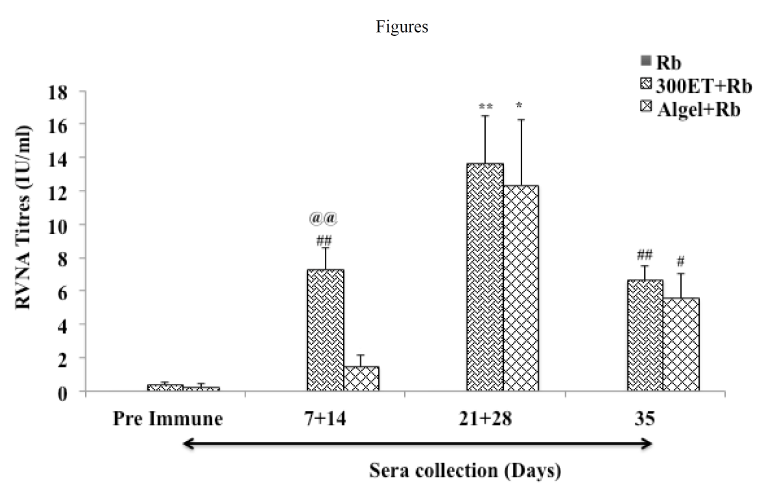
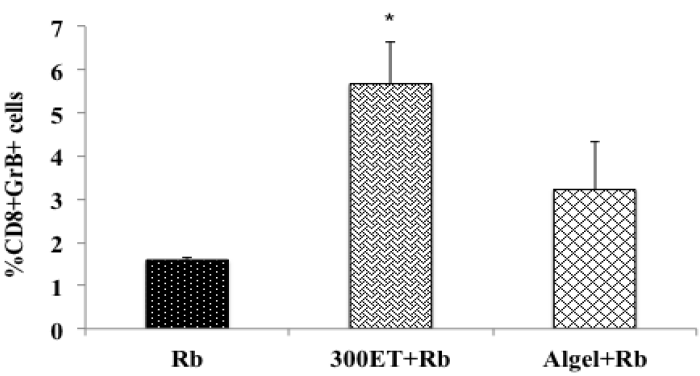
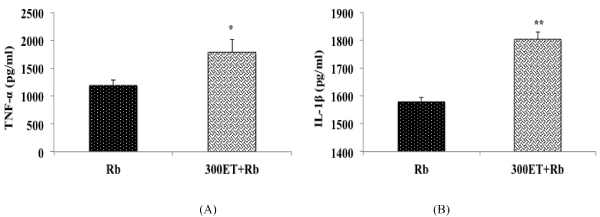
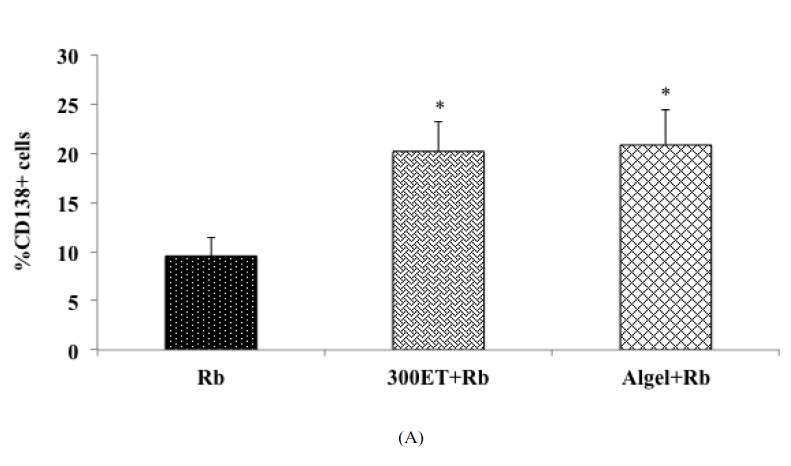

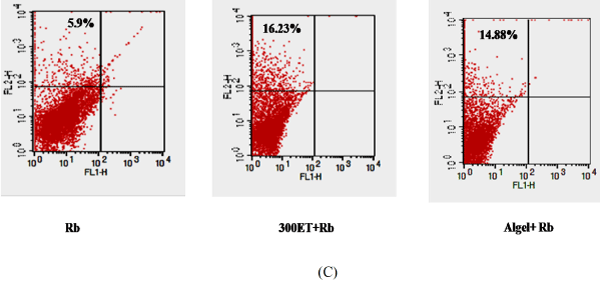
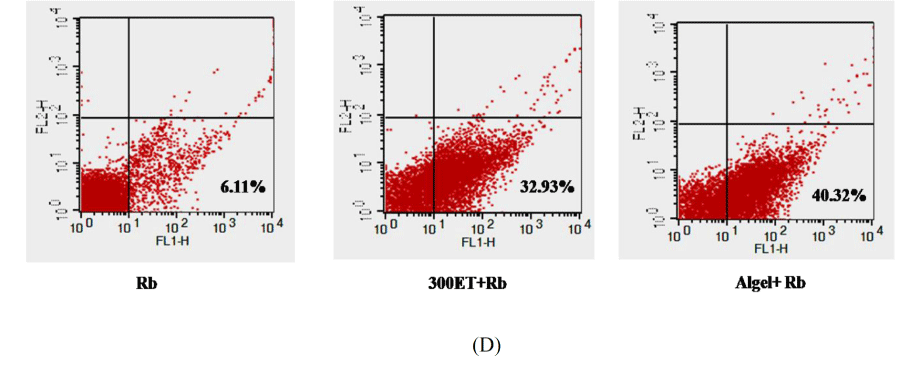

 Save to Mendeley
Save to Mendeley
